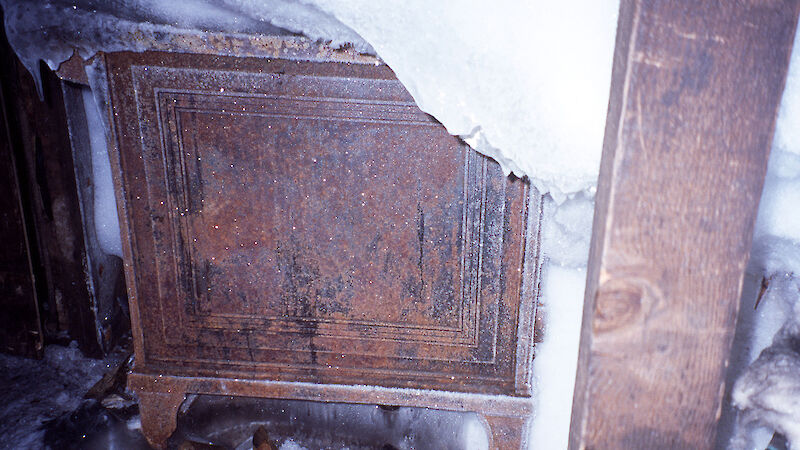The stove used by Australian Antarctic explorer Sir Douglas Mawson and his companions during their 1911–1914 expedition to the frozen continent has been freed from its icy cocoon.
Parliamentary Secretary for the Antarctic, Dr Sharman Stone, said today that the stove had been buried for more than fifty years, under ice and snow along with other precious artefacts at the historic Cape Denison site, until being exposed during conservation work on Mawson’s huts by an Australian Government expedition currently on site.
“Another significant find has been the tail section of Mawson’s air tractor. He had planned to take an aircraft with him to Antarctica from his home in Adelaide. However, it was involved in a slight accident before departure so Mawson had the wings removed and the fuselage transported for use as a tractor in Antarctica,” said Dr Stone.
The body of ‘Grandmother’, one of the huskies from Mawson’s expedition, has also been relocated. It’s believed that the dog was injured, ran away to lick her wounds and was never again seen by Mawson or his men.
‘Grandmother’s’ body wasn’t found until 1997, when it was discovered along with other relics on the Antarctic plateau, several kilometres inland of Mawson’s huts. The body was clinging only by hair to the snow. ”
‘Grandmother’ has now been safely stored in the corner of Mawson’s workshop near where all the dogs were housed when the huts were a hive of activity,” Dr Stone said.
Dr Stone has also announced the installation of equipment establishing a satellite phone link with Mawson’s main hut. “This will enable the information from temperature and humidity sensors inside the hut to be sent directly back to the Australian Antarctic Division for analysis,” she said. “This monitoring will be essential for future decisions on managing the hut and its priceless artefacts.”
Dr Stone said that given that Mawson had the first communications between Antarctica and Australia via high-frequency radio it was fitting that this modern communications tool would now be able to transmit important data on his living quarters.
“The Australian Antarctic Division expedition has been at Cape Denison for around four weeks assessing and documenting all artefacts inside Mawson’s main hut and the adjoining workshop and carrying out structural work to ensure the stability and conservation of the buildings,” said Dr Stone. “I am delighted with progress in this most difficult of conservation projects.”
Dr Stone said that the $500,000 Australian Government-funded project was proceeding as planned and was critical to ensuring the long-term conservation of Australia’s first presence in Antarctica.

